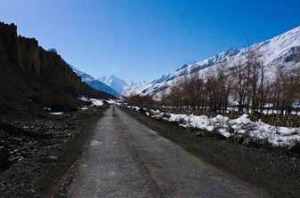 While Chinese exporters at the Mumbai Exhibition grounds in Goregaon didn’t see many walk-ins for their products probably owning to the hike in entrance fee which deterred many Indian window shoppers of Chinese goods, Indian traders went 18,599 feet above the sea level to sell their products in China.
While Chinese exporters at the Mumbai Exhibition grounds in Goregaon didn’t see many walk-ins for their products probably owning to the hike in entrance fee which deterred many Indian window shoppers of Chinese goods, Indian traders went 18,599 feet above the sea level to sell their products in China.
Widening their bouquet of tradable goods by 12, an increased number of Indian traders left for Shipki village in China-controlled Tibet to sell their goods. This year, the 12 new items, include carpets, spices, handloom material, religious paraphernalia, herbal medicines, shoes and ready made garments. During this season which lasts from June 1 and November 30, traders with special passes from both sides are allowed entry to a certain point here Shipki to exchange goods. Obtaining an importer exporter code (IEC) helps traders carry goods valued at more than Rs. 25,000 without paying customs duty.
At Shipki village, one finds only Indian traders, as Chinese traders from Tibet are weary to be seen there. Indian traders carry items like agricultural implements, blankets, copper products, clothes, textiles, cycles, coffee, tea, barley, rice, flour, dry fruit, dry and fresh vegetables, vegetable oil, jaggerry and tobacco. They return with items like jackets, shoes, crockery, flasks, goats and Chumurthi horses.
Trade through the pass, is diminishing as more convenient and durable means of import and export are now available. Last year 24 traders had exported goods worth Rs. 5.77 lakh and imported Chinese goods valued at Rs. 9.2 lakh. Though trade through the ancient passes is dropping, it is an important indicator of not only the economic health of our bilateral trade, but also of sino-Indian diplomatic ties and a very smart barometer of which way the trade winds will blow.
